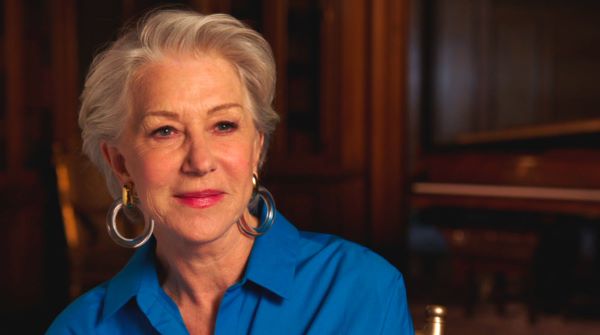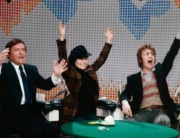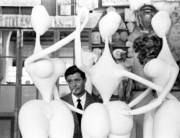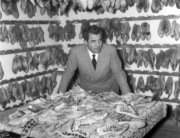
On Broadway attempts to cram the history of Broadway from its golden age, the 1940s–’50s, all the way to the current era. By design, it feels more like a stone skipping the surface of history rather than a deep dive. And it definitely gleans over some of the dark side of Broadway history, amounting to what is close to a hagiography. However, it’s quite entertaining and a must for theater aficionados. Those who have never stepped foot in Manhattan’s Theater District are bound to enjoy it too.
One of its main threads is the relationship between Broadway and the area around it. In the late ’60s, when Time Square fell apart and became a locus for crime, hustlers, and prostitutes, Broadway revenue fell and theaters were dark. It took theater owners, namely the Shubert Organization’s Gerald Schoenfeld and Bernard Jacobs, to realize that the audiences stay away when the neighborhood is terrible—though actors Ian McKellen and Helen Mirren loved its seedy denizens. She says, “I do theater. They’re my kind of people.”
Anyhow, Shubert partnered with New York State to create ads to drive people to the area (the famous “I love New York” television commercials) and worked with Mayor Abe Beame to create a commission to clean up the area. It took time, but then it worked like a charm. People started showing up and Broadway was relevant in pop culture again.
On Broadway also cherry picks productions that were important touchstones and does a pretty good job of explaining why. A Chorus Line, for example, brought nonprofits into the field and was instrumental in getting marginalized voices on the Great White Way. Cats paved the way for theater as spectacle, which became the specialty of the Brits in the ’80s. Angels in America highlighted life in the 1980s during the AIDS epidemic, and Fences placed African-American concerns front and center. The musicals Rent and Hamilton brought a youthful, more diverse group into the theatrical fold in terms of audiences.
Yet the film glosses over some unpleasant hiccups along the way. When we get to the Disney era, the film discusses positively how the the right of eminent domain was used to kick out businesses in order to create a more family friendly Time Square. The subsequent and fairly fierce opposition of this maneuver is addressed in a pithy comment, “We were roundly criticized,” before the movie moves on.
However, it does address the rising price of Broadway shows and how it limits the ability of many to see shows. Even there, another pithy quote, from producer Robert Fox, reaffirms that theater is “called show business.” Additionally, at the tail end, there is a lot of glad-handing regarding how productions have become more diverse. There’s just a bit too much self-congratulatory rhetoric in the back half, and no mention, for example, of the lack of female playwrights.
In a less successful section of the film, viewers follow the rehearsals for the play The Nap, about a British sport called snooker. The problem here is that the rehearsals are interspersed throughout, and there’s not much, well, drama going on. The production seems like a pretty smooth ride altogether. Talking heads discuss the play, but there’s little behind-the-scenes footage. Compared to the fairly fascinating story the film has cobbled together about the history of Broadway and the eminently quotable and very engaged interviewees in the rest of the documentary, this entire section falls flat.
But all in all, this is a fun, informative primer on the Great White Way that is enjoyable, if a bit slight.






Leave A Comment